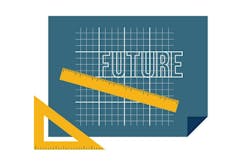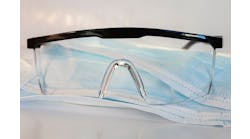Something that is causing quite a stir in our industry just recently hit our city of Cincinnati: consolidators. When a large group comes into a city and buys 10 or more shops at a time, it makes ripples and sometimes waves.
I have been keeping my eye on this growing trend for years and I know many others have as well. If you are in a fairly large city, the odds are strong that it will eventually come to you.
Really, what it offers is an opportunity for shop owners to think through their long-term strategy. The trend provokes several important questions for any shop owner:
- Do you have a long-term strategy that includes an end game and an exit plan?
- Would you be open to selling your business to a consolidator if the price was right?
- Would you prefer to stay in the industry, but have someone else run your shop for you so you can grow your free time while maintaining your income?
- Are you more interested in scaling your current business and acquiring more locations in the future?
The interesting thing to me is that when shop owners stretch their business out on a long enough timeline, most tend to fall into one of the categories above. Even more interesting is that the same things need to be in place no matter which option you prefer.
Whether you are hoping to sell, scale or simplify, your shop needs virtually the same things: sustainable processes, dependable people, and a diversity of referral partners. Here’s a breakdown of each:
Sustainable processes are things that drive predictable results. Are you having problems with comebacks? Perhaps you need a new quality control process that involves more than a quick light check at the very end of the job. Are receivables out of whack and you feel like you’re constantly chasing money on supplements? It might be time to consider how you process supplements. Whatever your current challenges are, they need to be identified and a tested solution needs to be implemented.
Once you have tested and found a solution that works, it’s time to write it down and make it a part of the ongoing operations of your shop. This is not a difficult process and really just involves finding the points of pain in your shop and developing checklists for how you can consistently overcome them. Then you can find the next big challenge. Eventually, as you develop multiple processes and many checklists, they can be collated into an operations manual that is a living, breathing and helpful document.
Second, a good long-term strategy involves hiring the right people. Have you hired people who are just like you? I hope not! Most shop owners have a very limited range of abilities. Key hires should initially be people who have strengths you do not have. For instance, I have been able to grow our top-line sales significantly over the last 10 years. However, I am realizing that getting to the next phase of our development as a business will require a completely different kind of leadership.
Our shop has been all gas pedal with very little brake or steering. In other words, we have grown very fast but now it is time to backfill that growth with clear processes and culture. Right now, my shop needs developmental leaders that can help us think long-term, not in short sprints of dramatic growth. When these different types of leaders can work together toward a common goal there is a certain magic that happens that is hard to describe, but you know you are on to something good.
Lastly, it is good to have a diverse portfolio of referral partners. This is especially true for shops that can become dependent on one or two DRPs. If a DRP or any referral partner makes up more than 25 percent of your business, that is a red flag. I have been there. It creates insecurity and you may find yourself compromising on your shop values just to please the partner so you can keep making payroll.
The best way to not stay overly dependent on any referral source is to keep adding others. So add other DRPs and find car dealers or fleet accounts that can consistently send you work. Utilize your website and online reviews as part of your overall strategy. Then there are networking groups like Business Networking International (BNI) or local chambers of commerce where you can meet other professionals who have wide spheres of influence. Those relationships can also generate work for your facility.
Whether you are looking to sell, scale or simplify, a good long-term strategy will include all of the elements above. With those things in place there’s no reason to fear the future, even if it does include consolidation in your market.




